Key takeaways:
- Data informs effective strategies by uncovering customer preferences and trends, leading to enhanced engagement.
- Identifying key data sources, such as customer service logs and social media analytics, reveals critical insights.
- Transforming insights into strategies fosters a culture of adaptability and collaborative innovation within teams.
- Continuous improvement through data allows for the refinement of processes and better alignment with customer needs.
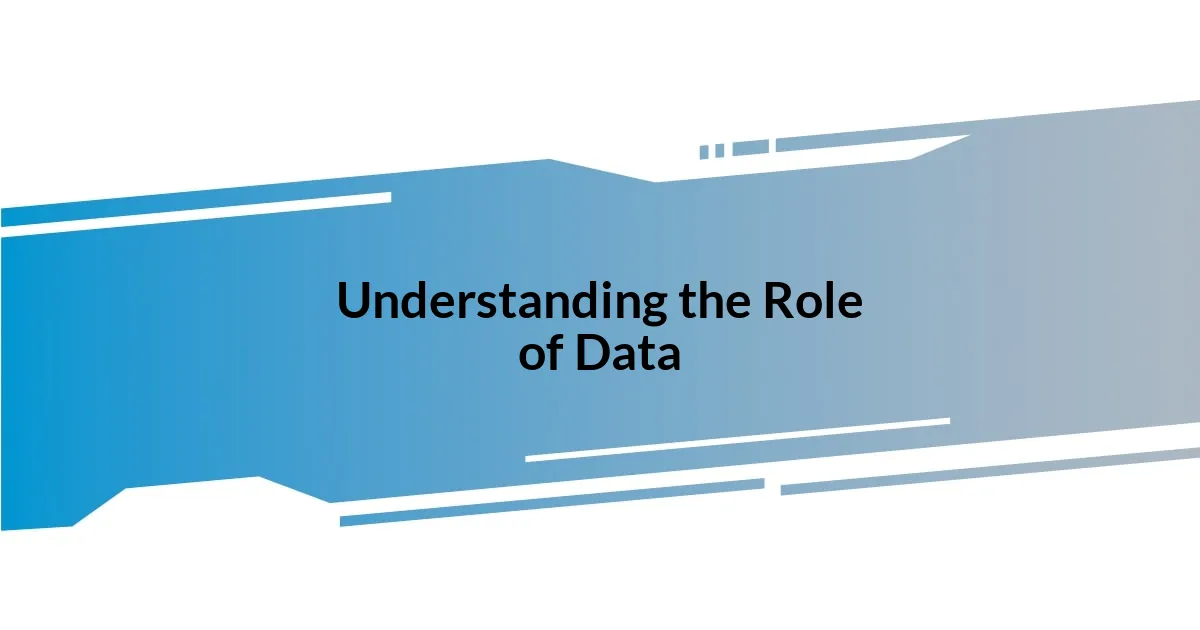
Understanding the Role of Data
Data plays a crucial role in shaping effective strategies because it serves as a foundation upon which decisions are made. I remember a time when I was tasked with improving customer engagement at my company. By diving into the data, I discovered that our audience preferred personalized communication, which led us to tailor our messaging more specifically—resulting in a noticeable increase in engagement.
Have you ever felt overwhelmed by the sheer amount of data available? I certainly have. However, what I’ve learned is that it’s not about collecting everything; it’s about identifying the right metrics that align with your goals. Focusing on relevant data points can illuminate pathways to success and reveal trends that you may not have noticed otherwise.
In my experience, data isn’t just numbers; it’s a story waiting to be told. One project involved analyzing customer feedback, and it became clear that the narrative hidden within the statistics revealed critical insights about our product. This kind of storytelling with data—transforming numbers into actionable strategies—truly empowers businesses to evolve and meet their customers’ needs effectively.
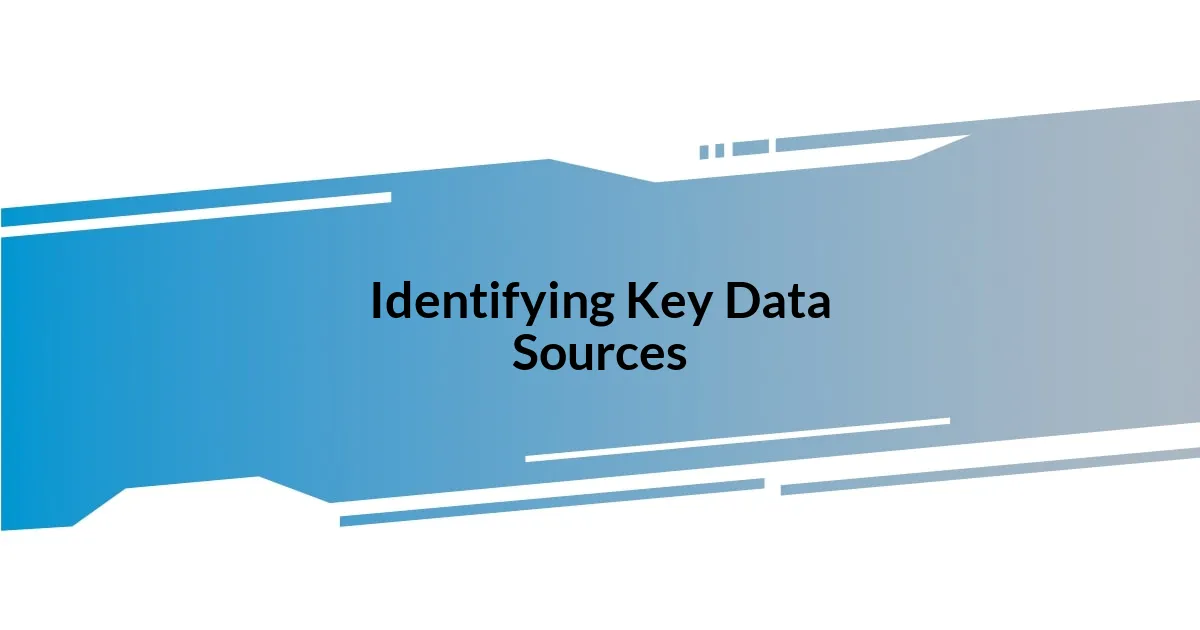
Identifying Key Data Sources
Identifying key data sources can often feel daunting, but I’ve found it to be an exhilarating journey. In one of my projects, I focused on customer service interactions. By analyzing records from emails and chat logs, I pinpointed frequent pain points, which not only shaped our approach but also fostered a stronger connection with our clients. When I realized how much we could learn from these key sources, it was like discovering a hidden treasure trove of information.
There’s a certain thrill when you uncover unexpected insights. For instance, during a market analysis for a new product launch, I decided to track social media conversations alongside traditional sales data. The juxtaposition was eye-opening; it revealed not only who was buying our product but also who was discussing it and why. What a reminder that sometimes, the conversations happening outside of your direct channels can inform your strategy just as powerfully as the numbers can.
When tasked with enhancing a marketing campaign, I discovered that web analytics were my golden key. By examining visitor behavior on our site, including the pages they lingered on, I was able to tailor our content to resonate better with our audience. This experience taught me that the most valuable data sources might just be the places we take for granted—like our own digital footprints.
| Data Source | Insights Gained |
|---|---|
| Customer Service Logs | Identified pain points and areas for improvement in engagement |
| Social Media Analytics | Understanding audience sentiment and conversation trends |
| Web Analytics | Behavior patterns informed targeted content strategies |
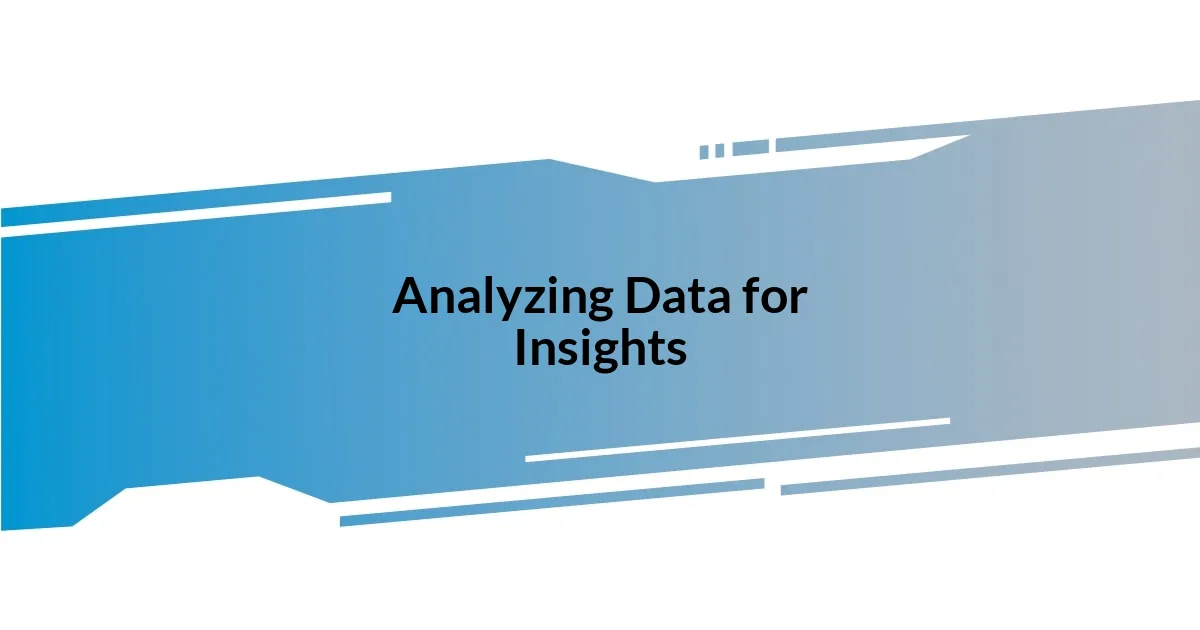
Analyzing Data for Insights
Analyzing Data for Insights
Delving into data is where the magic happens. I vividly recall a project where I analyzed website traffic to uncover users’ motivations. I devoted hours to dissecting heat maps and click patterns, and what emerged was astonishing: we were missing out on opportunities simply because visitors were struggling to find what they wanted. That moment of clarity led us to revamp our site’s navigation, significantly enhancing user experience and engagement.
Data analysis isn’t solely about crunching numbers; it’s about interpreting what those numbers mean for your audience. It’s like piecing together a jigsaw puzzle. In another instance, I combined sales data with email open rates, revealing that personalized subject lines had a substantial impact on our conversion rates. That discovery changed how we approached our email marketing, making it more targeted and effective. Such insights can genuinely transform your strategy and impact your bottom line.
- Heat maps revealed user struggles, prompting a site navigation overhaul.
- Correlation between personalized subject lines and higher conversion rates was a game-changer.
- Analysis of customer journey helped in identifying critical touchpoints for intervention.
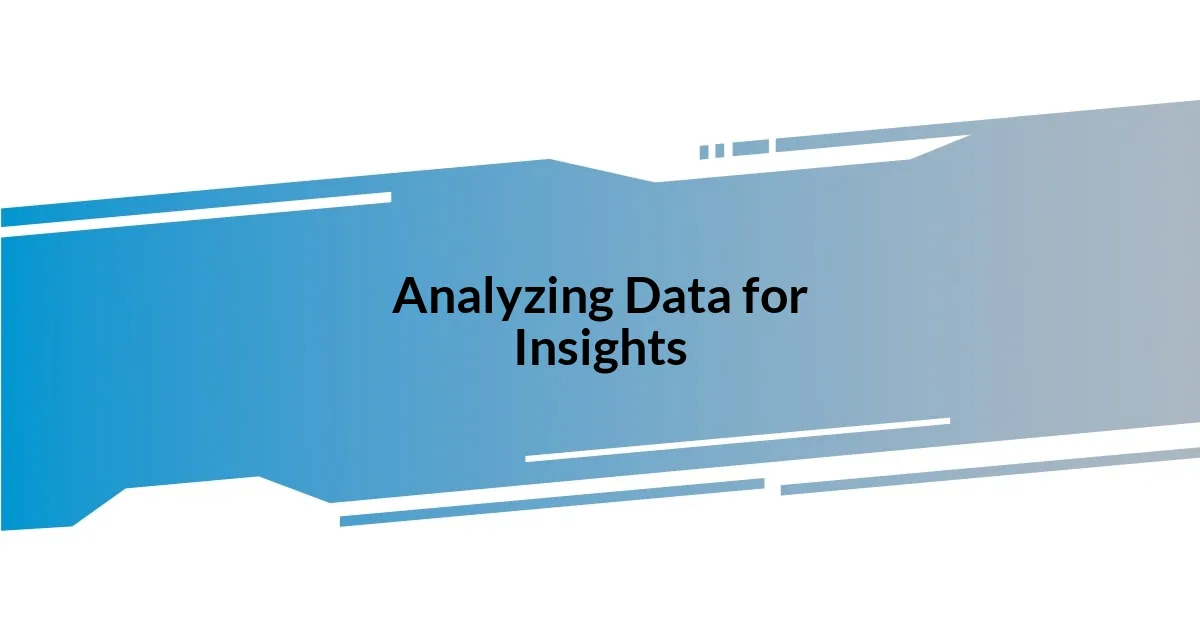
Transforming Insights into Strategies
Transforming raw insights into actionable strategies is an exhilarating process. I often think of it as translating a complex language into something everyone can understand. For example, after gathering feedback from a user survey, I clearly noticed a recurring theme: users wanted more interactive content. By aligning this insight with our marketing strategy, we decided to launch a series of engaging webinars. The result? A remarkable boost in user engagement and satisfaction.
But there’s more to it than just implementing changes; it’s about fostering a mindset that embraces adaptability. I remember leading a team meeting where we presented insights from a recent data analysis. As we discussed our findings, it felt like pieces of a puzzle coming together. The energy in the room was palpable, and it encouraged us to pivot our approach toward more data-driven decision-making, which really opened up new avenues for growth.
Have you ever questioned how a single insight could alter your strategy? In a project focused on product development, I stumbled upon customer feedback indicating a desire for eco-friendly options. This insight was a game-changer for us. By incorporating sustainable practices and marketing them effectively, not only did we capture a dedicated customer base, but we also aligned our brand with values that resonate deeply today. Transforming insights into strategies truly does create ripples of change.
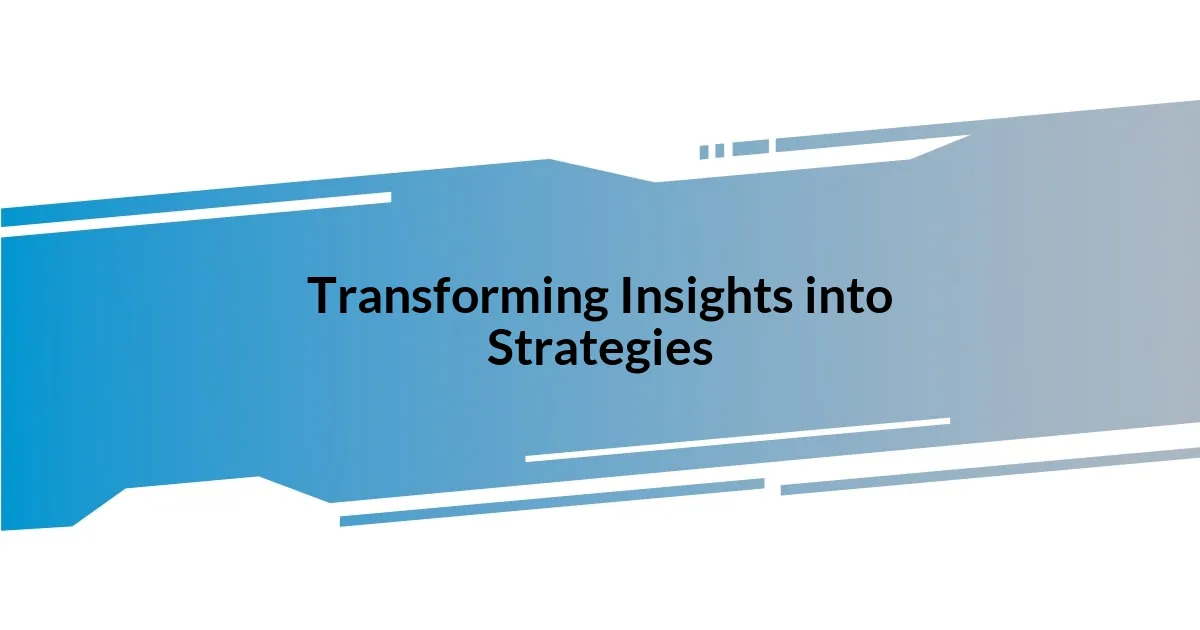
Implementing Data-Driven Strategies
Implementing data-driven strategies is all about action. I remember a time when our team set out to improve customer retention. By analyzing churn data, we identified that users often left after encountering unresolved issues. Armed with this insight, we developed a targeted outreach program where our support staff followed up with customers who had unresolved tickets. The result? Not only did we reduce churn dramatically, but we also learned the value of proactive customer engagement.
One crucial aspect I’ve learned is the importance of communication when rolling out these strategies. During a company-wide meeting, I shared our findings and the steps we planned to take based on our data analysis. The feedback was overwhelmingly positive, yet there were skeptics who raised concerns about feasibility. Addressing their worries head-on allowed us to refine our approach, ensuring that everyone felt involved in the implementation process. Have you ever faced pushback when introducing new strategies? If so, I can assure you that transparency can ease fears and build stronger team cohesion.
As I refined these data-driven strategies, I couldn’t help but notice the innovation it sparked within our team. I vividly recall a brainstorming session that turned into an impromptu workshop on data storytelling. Each member shared insights from their respective areas, leading to creative solutions that none of us had anticipated. This collaborative atmosphere not only enhanced our strategies but also fostered a culture of experimentation where everyone felt empowered to contribute. Implementing data-driven strategies becomes a vibrant journey when you engage your team and leverage their insights.
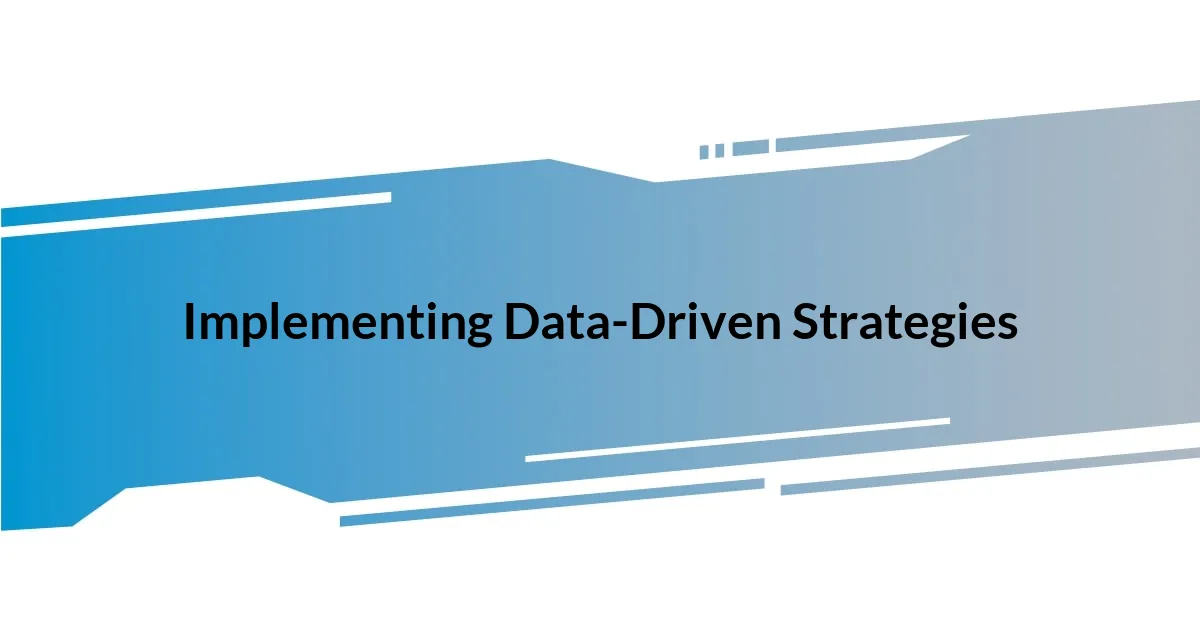
Measuring Strategy Effectiveness
Measuring the effectiveness of a strategy requires more than just numbers; it’s about understanding the story behind the data. I remember a particularly insightful quarterly review where we analyzed customer engagement metrics post-implementation. As the stats rolled in, I noticed not just the increased numbers, but the genuine smiles among the team. This moment reinforced how these metrics reflected real-world experiences, not just bar graphs.
I often ask myself, “How do we know when our strategy is truly working?” For one initiative aimed at expanding our social media presence, we established clear KPIs—like engagement rates and conversion ratios—to track our progress. As weeks went by, I felt a sense of anticipation each time we reviewed these metrics. Noticing a spike in engagement felt akin to reaching a milestone, showing that the changes we implemented were resonating with our audience.
But even more critical than just celebrating successes is addressing shortcomings. I recall an instance where one of our campaigns didn’t yield the anticipated results. Instead of brushing it aside, we gathered around to dissect the data. What went wrong? This candid conversation revealed misunderstandings about our target audience. It was a humbling experience. By measuring not just the outcomes but also the processes, we learned valuable lessons that shaped our next strategy, making us more resilient and capable of adapting to feedback.
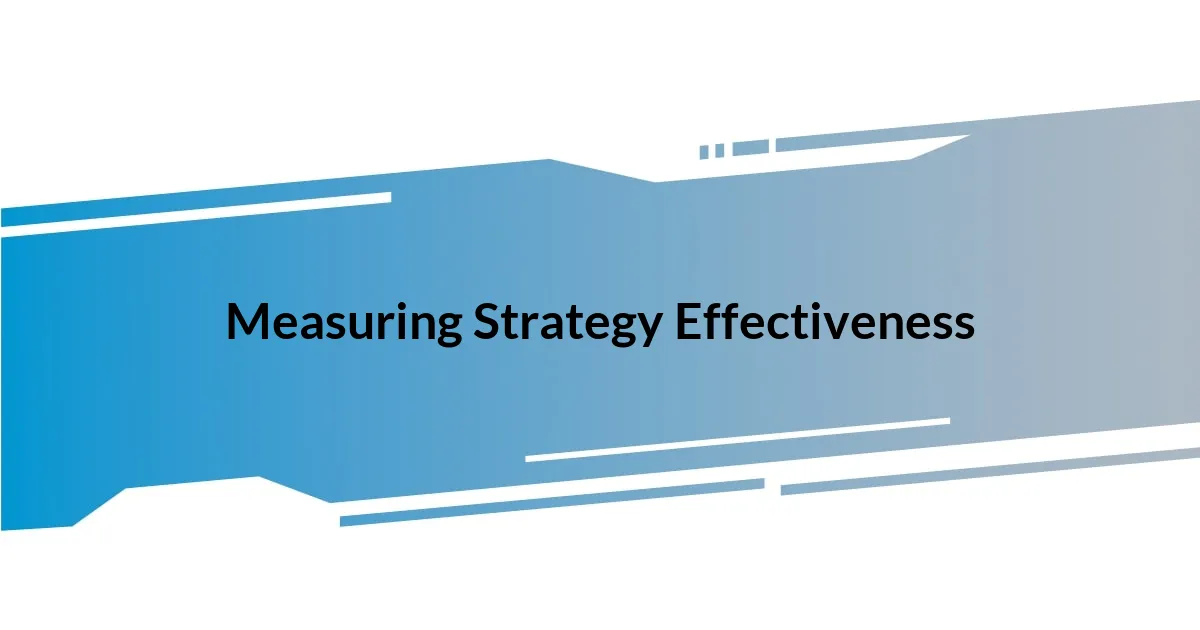
Continuous Improvement through Data
Continuous improvement through data is an ongoing journey that has shaped my perspective on how to refine strategies. I recall one pivotal moment when we sought to streamline our operations. By scrutinizing workflow data, we uncovered bottlenecks that were inhibiting productivity. Taking action based on those insights not only improved efficiency but fostered a culture where team members felt empowered to share their observations and suggestions. Have you ever had a moment where data prompted you to rethink a fundamental process? Those realizations can be eye-opening.
Feedback loops are crucial in this process. I find it fascinating how a simple survey can yield profound insights into our customers’ experiences. After implementing changes based on their feedback, we noticed a tangible shift in customer satisfaction scores. The joy in our team’s eyes when we celebrated that improvement was contagious! It’s these moments that remind me how data isn’t just about metrics; it’s about telling the story of the people we serve, making our work feel purposeful.
On another occasion, I initiated a project to improve our product features based on usage data. I vividly remember the brainstorming sessions where team members shared creative ideas that emerged from the data we collected. Encouraging open dialogue about our findings not only sparked innovative solutions but also deepened our collective investment in the outcomes. Reflecting on that experience, it’s evident that the synergy between data and collaborative effort paves the way for continuous improvement, making each step of the journey both rewarding and enlightening.